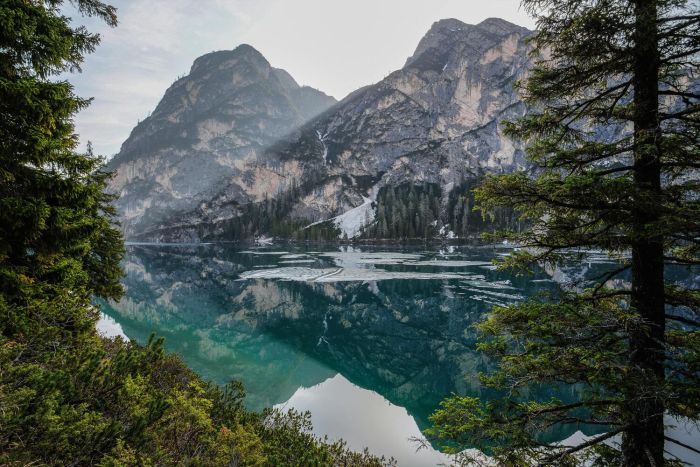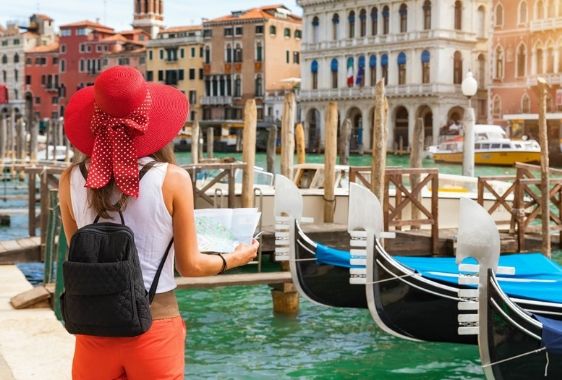Why Is Michelangelo Famous?
Michelangelo is best known for his sculptures – David and Pieta and of course, the paintings which adorn the ceilings of the Sistine Chapel.
His story is just as fascinating as the work he produced. Here, in our blog, we share the history of his life with you – a story that we, Avventure Bellissime – the Italian tours specialist - just love to bring to life in our tours of Rome and tours of Florence. Be sure to join us on our tours of Italian cultural highlights during your Italian holidays.
Michelangelo's Life and Story
Michelangelo's remarkable 88-year life spanned the height of the Italian Renaissance, leaving an indelible mark on art and architecture that still captivates us today. From his early days studying anatomy in Florence to his final years transforming Rome's skyline, Michelangelo's journey from a banker's son to history's most celebrated artist is a testament to his unparalleled genius and relentless dedication to his craft.
Michelangelo's Childhood: Early Years in Florence and Caprese
Michelangelo di Lodovico Buonarroti Simoni was born in Caprese, Italy in 1475. His family were bankers – a profession that’s a million miles away from the painter, sculptor, architect and poet that he later became.
The family later moved to Florence – one of Italy’s most important cities, which is only one of the reasons to visit Florence. During his childhood, Michelangelo was placed with a family of stonecutters because his mother had become ill and his father was presumably working, so they helped look after him. He later acknowledged that his early exposure to stonecutting might have had something to do with his artistic path.
Where Did Michelangelo Learn His Craft? The Medici Gardens Years
His father was open minded enough to know, even at an early age, that his son wasn’t going to follow him into the banking profession. So, he agreed to let him be an apprentice to a Florentine painter’s workshop at the tender age of 13.
Michelangelo spent a year at the painter’s workshop before moving to study classical sculpture in Medici gardens in 1489 until 1492.
It was here where he studied under the respected sculptor Bertoldo do Giovanni, and under his stewardship he mixed with poets and scholars within Florentine society.
Interesting Facts About Michelangelo: The Cupid Deception
Michelangelo perhaps got his big break by duping a cardinal. Although it has to be said that he did not do that directly. Around 1495, after a brief period in Bologna, he created his ‘Cupid’ sculpture. An agent had made it look like an antique, and this ‘antique’ caught the eye of Cardinal Riario of San Giorgio. When he realised it wasn’t an antique piece of art, he demanded his money back. However, when he found it had been created by a 20 year old young man called Michelangelo, he was impressed and invited him to Rome. (Incidentally, Michelangelo got to keep the payment, too!).
Where Did Michelangelo Live in Rome? The Vatican Years
Michelangelo lived primarily in Rome's Macel de' Corvi district near Trajan's Column, where he maintained a modest home and workshop from 1513 until his death in 1564, though he also kept residences near the Vatican during his work on the Sistine Chapel and St. Peter's Basilica.
In Rome, he created the famous ‘Pieta’ sculpture – which is an image of the Virgin Mary holding the body of Jesus. It now stands in St Peter’s Basilica, which you can explore in full with a Private Vatican Tour with Guided Sistine Chapel Tour and St. Peter’s Basilica from Avventure Bellissime.
Michelangelo's David: A Symbol of Florentine Liberty
It was after this that he returned to Florence to complete ‘David’ – a sculpture that had already been abandoned by two other sculptors. Michelangelo’s David is an example of his distinctive ‘muscular’ style. This is perhaps something that was developed by his study of corpses. It was originally destined to stand in Florence Cathedral, but instead was unveiled outside the seat of civic government in Florence. This may have been because David represented the defence of civil liberties. Join us, Avventure Bellissime - the Italian tour experts – during your holiday in Florence, to learn about all David by Michelangelo facts and history, in his current home in Galleria dell’Accademia and learn more about his creation during our Private Florence Renaissance Walking Tour.
Why Michelangelo's Sistine Chapel Changed Art Forever
After David was unveiled, commissions followed for Michelangelo. The most famous was the invitation to decorate the ceiling of the Sistine Chapel. Like David and the Pieta, this is something that will take your breath away when you see it with your own eyes. With Avventure Bellissime, you can tour the Sistine Chapel with skip the line tickets, and learn about the fascinating stories and facts of the Sistine Chapel:
- How the plan to paint 12 apostles became a painting involving 300 figures!
- How the work had to be removed soon after it was completed because of a fungus in the plaster.
- How Michelangelo recreated it again – alone – after sacking all his assistants.
- And how he spent years on his back painting every last detail.
The story of the Sistine Chapel frescoes is fascinating and hearing it whilst viewing the masterpiece is a fabulous experience and a must on any Italian holiday.











